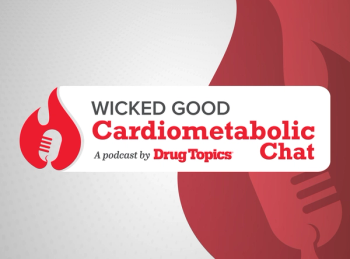
Once-daily rivaroxaban appears to be as effective as dose-adjusted warfarin
Once-daily oral rivaroxaban (Xarelto, Bayer), a direct factor Xa inhibitor, appears to be as effective as dose-adjusted warfarin in preventing stroke or major embolism in patients with nonvalvular atrial fibrillation, according to a study published online August 10 in the New England Journal of Medicine.
Once-daily oral rivaroxaban (Xarelto, Bayer), a direct factor Xa inhibitor, appears to be as effective as dose-adjusted warfarin in preventing stroke or major embolism in patients with nonvalvular atrial fibrillation, according to a study published online August 10 in the New England Journal of Medicine.
The Rivaroxaban Once Daily Oral Direct Factor Xa Inhibition Compared with Vitamin K Antagonism for Prevention of Stroke and Embolism Trial in Atrial Fibrillation (ROCKET AF) was a multicenter, randomized, double-blind, double-dummy, event-driven trial that was conducted at 1,178 participating sites in 45 countries.
From December 18, 2006, through June 17, 2009, researchers randomly assigned 14,264 patients with nonvalvular atrial fibrillation who were at moderate-to-high risk of stroke to receive either fixed-dose rivaroxaban at 20 mg daily or 15 mg daily in patients with a creatinine clearance of 30 mL to 49 mL per minute or dose-adjusted warfarin (target international normalized ratio [INR], 2.0 to 3.0). Patients in each group also received a placebo tablet in order to maintain blinding. Elevated risk was indicated by a history of stroke, transient ischemic attack, systemic embolism, or at least 2 of the following risk factors: heart failure or a left ventricular ejection fraction of 35% or less, hypertension, an age of 75 years or more, or the presence of diabetes mellitus.
Patients were treated for a median 590 days, and the median follow-up period was 707 days. Researchers lost 32 patients to follow-up.
In the primary efficacy analysis, stroke or systemic embolism occurred in 188 patients in the rivaroxaban group (1.7% per year) and in 241 in the warfarin group (2.2% per year) (hazard ratio in the rivaroxaban group, 0.79; 95% CI, 0.66–0.96; P
In the intention-to-treat analysis, primary end point occurred in 269 patients in the rivaroxaban group (2.1% per year) and in 306 patients in the warfarin group (2.4% per year) (HR=0.88; 95% CI, 0.74–1.03; PP=.12 for superiority). During treatment in the intention-to-treat population, patients in the rivaroxaban group had a lower rate of stroke or systemic embolism (188 events, 1.7% per year) than did those in the warfarin group (240 events, 2.2% per year) (P=.02).
Major and nonmajor clinically relevant bleeding occurred in 1,475 patients in the rivaroxaban group (14.9% per year) and in 1,449 in the warfarin group (14.5% per year) (HR=1.03; 95% CI, 0.96–1.11; P=.44), with significant reductions in intracranial hemorrhage (0.5% vs 0.7%, P=.02) and fatal bleeding (0.2% vs 0.5%, P=.003) in the rivaroxaban group.
“In the intention-to-treat population, we found no significant between-group difference in a conventional superiority analysis,” the authors wrote. “In contrast, in the analyses of patients receiving at least one dose of a study drug who were followed for events during treatment, we found that rivaroxaban was superior to warfarin. The difference between these results reflects the fact that among patients who discontinued therapy before the conclusion of the trial, no significant difference in outcomes would have been anticipated, and none was seen.”
The study was supported by Johnson & Johnson Pharmaceutical Research and Development and Bayer HealthCare. The Duke Clinical Research Institute coordinated the trial, managed the database, and performed the primary analyses independently of the sponsors.
Newsletter
Pharmacy practice is always changing. Stay ahead of the curve with the Drug Topics newsletter and get the latest drug information, industry trends, and patient care tips.






































































































































